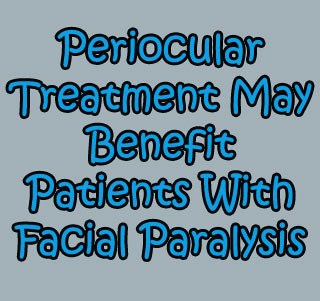
During the study, experts measured the change in quality of life (QOL) after surgical periocular treatment. The Facial Clinimetric Evaluation (FaCE) scale was put to use for calculating impairment and disability in facial paralysis. In the time period of March 2009 to May 2010, 49 patients with paralytic inability to completely close the eye were treated. Preoperative and postoperative FaCE surveys were completed by a total of 37 patients. QOL measured by the FaCE instrument reportedly found significant improvement in patients with facial paralysis who underwent static periocular treatment.
The mean FaCE scores purportedly increased from 44.1 to 52.7. Also a dramatic fall in the amount of time their eye felt dry, irritated or scratchy was registered byDouglas K. Henstrom, M.D., of Harvard Medical School, Massachusetts Eye and Ear Infirmary, Boston, and colleagues. In the course of the study, 2 patients experienced localized cellulitis, which is a bacterial infection of the skin and tissues beneath the skin in reaction to the eyelid weight. So overall, the treatment paradigm for patients with facial paralysis improves corneal protection and also produces a strong subjective benefit.
The study is published in the March issue of Archives of Facial Plastic Surgery, one of the JAMA/Archives journals.

